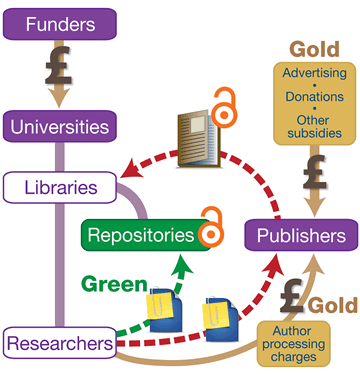Collaboration is an integral part of being an engineering student. Information and knowledge is frequently shared and traded to achieve specific goals within a project. Often, the medium for collaboration is the internet. An abundance of materials and articles are available to aid not only engineering students, but all students alike, to achieve success within their discipline but it is not always that easy. Most of this information is not free. Many students, myself included, are required to subscribe to academic journals just to be able to access a few articles that might help our education. The journal business is so large that its prices have outpaced inflation by almost 250% over the last thirty years. This begs for an alternative.
Open access is a concept developed to rid this issue. It is about making products and literature freely accessible to all via the internet. Open access allows scholarly articles and research to be disseminated quickly and widely, causing the research process to operate more efficiently, benefitting the likes of students, teachers, researchers and scholars. Open access can be broken into two mechanisms, green and gold. The gold is where authors publish their articles straight to an open access journal, whilst the green mechanism is where the final peer-reviewed journals are deposited into an open access archive called a repository.

Sal Khan is an example of a content developer who has benefitted greatly from making his educational resources available freely online. Khan is the founder of the online non-profit school, Khan Academy. He makes use of open access by making whole courses on a variety of topics available for anyone to view and take advantage of. Khan’s motivation for his academy is his ‘belief that the current school system is outdated and deadens a child’s natural curiosity’. His beliefs are proving to be right as his videos are watched by almost three million unique users a month.
With almost anything, there are also some disadvantages posed to content developers from open access. I have provided a short presentation to display both the benefits and drawbacks of this concept.
http://www.powtoon.com/embed/bsmsuhb8c1E/
I am, however, much on the side of open access, not least because it makes writing 3,000 word reports a lot easier. I feel open access creates a far more superior learning experience, as it enables extremely efficient and affordable sharing, the essence of education.
[391 Words]
Sources:
Debra Dunn, Forbes 2013. Education Finally Ripe For Radical Innovation By Social Entrepreneurs
Wiley, Green and Soares, 2012. Dramatically Bringing Down the Cost of Education with OER
Piled Higher and Deeper (PHD comics), 2012. Open Access Explained
OpenAccess.nl. Pros and Cons
University of Leeds Library. What do I need to know about open access
Higher Education Funding Council for England. Open access research
Wiley, 2014. Understanding Open Access
Helena de Bertodano, Telegraph 2012. Khan Academy: The man who wants to teach the world
Image:
Logo of freeforall.cc

Hi Kevin,
This is a very informative post. The abundance of multimedia really got the point across well, whilst your use of figures further developed your point. For example, the huge level of growth of the journal business put into perspective just how profitable the market is.
However, in my research, I found claims by Geib that open access could cause the quality of articles to fall. This is because, due to the high costs incurred, Journals will be inclined to publish more articles, some of which will be of lower quality. This is also highlighted when you consider the argument that ‘90% of potential readers can access 90% of all available content through national or research libraries.’
Therefore, would you agree that open access may not be the ideal way for online research to go?
LikeLike
Hi Kevin,
I was drawn to your blog by your colourful flow chart about how journals are distributed. This, along with your Powtoon video, helped clarify points made in your blog post and helped me engage more in the topic. I enjoyed your section about Sal Kahn making educational resources free online as this is something I hadn’t considered or read in other blogs. As I have used the website myself I know what a useful resource it is yet I don’t feel I would pay to use it. I agree with your point that educational material should be open access as it allows knowledge to be spread with ease. Although, as stated in your Powtoon, losing copyright over work may put content producers off the idea. Drawing away from academia, what is your view on whether media such as entertainment and news should be freely accessible?
Thanks,
Chris
(149 Words)
LikeLike
Hi Kevin,
I find your blog post this week very informative – your use of a wide range of resources really helped to provide a broader perspective to look into this area.
I especially appreciate that you have used real-life examples such as Wiley and Khan academy to demonstrate how open access works.
Inspite of all the benefits of open access that you have mentioned, I feel that the drawbacks fall a bit on the weak side.
I personally believe that a certain monetization is necessary in order to provide funding for researchers and non-profit service providers such as Wikipedia to maintain and enhance the quality of their services. With that said, I think the best way would be to encourage people who use the services to make donations. That way, the standards of the services can be maintained without the need to install a paywall.
Thanks for sharing!
Hei Lam
LikeLike